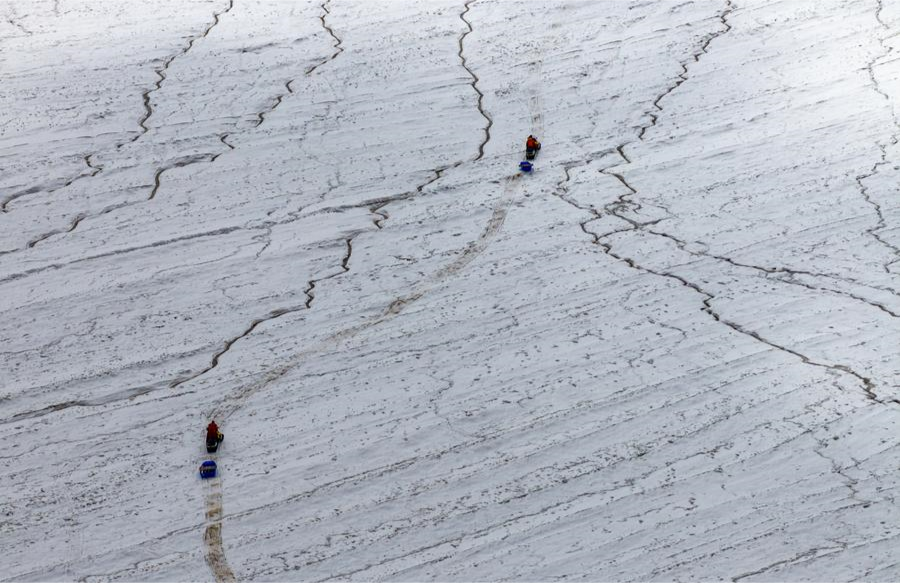
 0 Comment(s)
0 Comment(s) Print
Print E-mail Xinhua, October 30, 2024
E-mail Xinhua, October 30, 2024
An aerial drone photo shows members of Chinese scientific expedition team heading deep into the Purog Kangri Glacier in southwest China's Xizang Autonomous Region, Sept. 4, 2024. [Photo/Xinhua]
Chinese scientists announced Tuesday that they had successfully extracted a 324-meter ice core from the thickest glacier on the Qinghai-Xizang Plateau -- the longest ice core ever drilled on the plateau and the longest globally outside the polar regions.
Braving the wind and snow, researchers from the Chinese Academy of Sciences (CAS) had worked tirelessly on the summit of the Purog Kangri Glacier in Tsonyi County, China's highest county in altitude with over 5,000 meters above sea level on average in Xizang Autonomous Region, for over a month.
The ice core surpassed the previous record set in 1992, when scientists from China and the United States drilled a 308.6-meter ice core from Guliya Ice Cap in Xizang's Ngari Prefecture on the plateau, according to the CAS.
Glaciers contain important information about the Earth's climate history.
"The longest ice core here has unique geographical and climatic characteristics, recording long-term climate and environmental information for the area," said Xu Baiqing, deputy director of the Institute of Tibetan Plateau Research, CAS, who led the extraction project.
During the Purog Kangri Glacier scientific research project, which started in September, scientists identified it as the thickest glacier on the Qinghai-Xizang Plateau, following the discovery of an ice field with a maximum measured thickness of nearly 400 meters.
Lonnie Thompson, a member of the American Academy of Sciences and a foreign academician of the CAS, joined the research in September.
"Currently, glaciers worldwide are retreating. Once they melt, the historical records encapsulated within them will also disappear," Thompson told Xinhua during his trip to the research site.
"Therefore, extracting and preserving ice cores is crucial for retrieving historical information," he added.
The ice core drilling and thickness measurement of Purog Kangri Glacier are part of China's second scientific expedition and research project on the Qinghai-Xizang Plateau, initiated in August 2017 and headed by Yao Tandong, an academician of the CAS.
By measuring the thickness and extracting ice cores, scientists can better examine the changes occurring in this largest ice field in the mid-to-low latitudes and the environmental changes it has recorded, thereby gaining a more comprehensive understanding of the impact of global warming on glaciers, Yao said.
Go to Forum >>0 Comment(s)